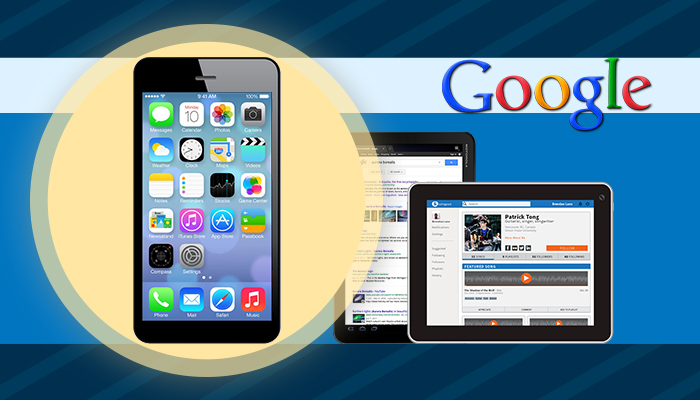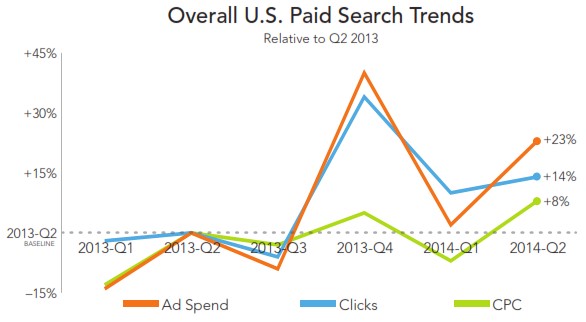Overall search ad spending in the US grew 23% year-over-year in the second quarter of 2014 after slowing down during the holiday season, based on RKG’s Digital Marketing Quarterly Report. Mobile influence also continued to produce growth by 47% year-over-year. [See Figure 1]
Image-based products are dominating the digital marketing world over traditional text ads, causing higher growth in ad spending. Search ad spending on product ads rose 72% over the last year in Q2 compared to text ad spending’s 6% increase.
The report also details Google’s continuous overall spending, with 24% growth year-over-year mainly caused by increases in paid clicks, CPCs, and PLAs. The PLA share of total Google clicks remained steady from the last quarter at 26%, with 50% of non-brand clicks among advertisers running both PLA and text ads.
However, RKG anticipates that Google’s upcoming transition to a new PLA campaign structure next month will contribute to the continued inflation of conversion rates, resulting in 13% higher ROI compared to text ads. Statistics show that image-based products are suggesting continued growth opportunities.
Meanwhile, smartphones produced 19% of paid search clicks and 9% of search spending. Tablets generated 18% of clicks and 19% of spending. Mobile’s share hit 27.7% from 26.9% in Q1 and 24.1% year-over-year. Advertisers saw strong ROI growth in smartphones that contributed to nearly 25% of cross-device conversions and 12% single-device conversions. According to RKG, Google’s cross-device tracking produces 7% more conversions overall, and leads to 14% more smartphone orders.
Search marketing agency Covario’s latest quarterly analysis shows a 21% year-over-year increase in overall spend in Q2 and 2% over Q1 of 2014.The Americas led the growth with spend rising 31% year-over-year in the region. Europe, the Middle East, and Africa (EMEA) contributed a modest 3% due to an increase in click activity and higher CTRs. The Asia-Pacific region (APAC) contributed a mere 1%.
Adobe also released a quarterly report showing Google getting a small increase of 4% year-over-year, while Bing decreased 6%. More significantly, their data on cross-device conversions showed that desktop will decline to 60% in paid search by Q4 of 2014 due to the organic increase of smartphone adoption. WiFi availability, greater mobile bandwidth, improved mobile landing pages, as well as site and app experiences are the main reasons why smartphone adoption reached 30% of paid search.
Marketing Digest Writing Team
Latest posts by Marketing Digest Writing Team (see all)
- How Taco Bell Struck Gold with Its Memorable Viral Marketing Campaigns - September 15, 2015
- Salesforce Marketing Cloud Releases New Instagram Marketing Tools - September 12, 2015
- Chrome Begins Pausing Flash Ads by Default to Improve User Experience - September 3, 2015


